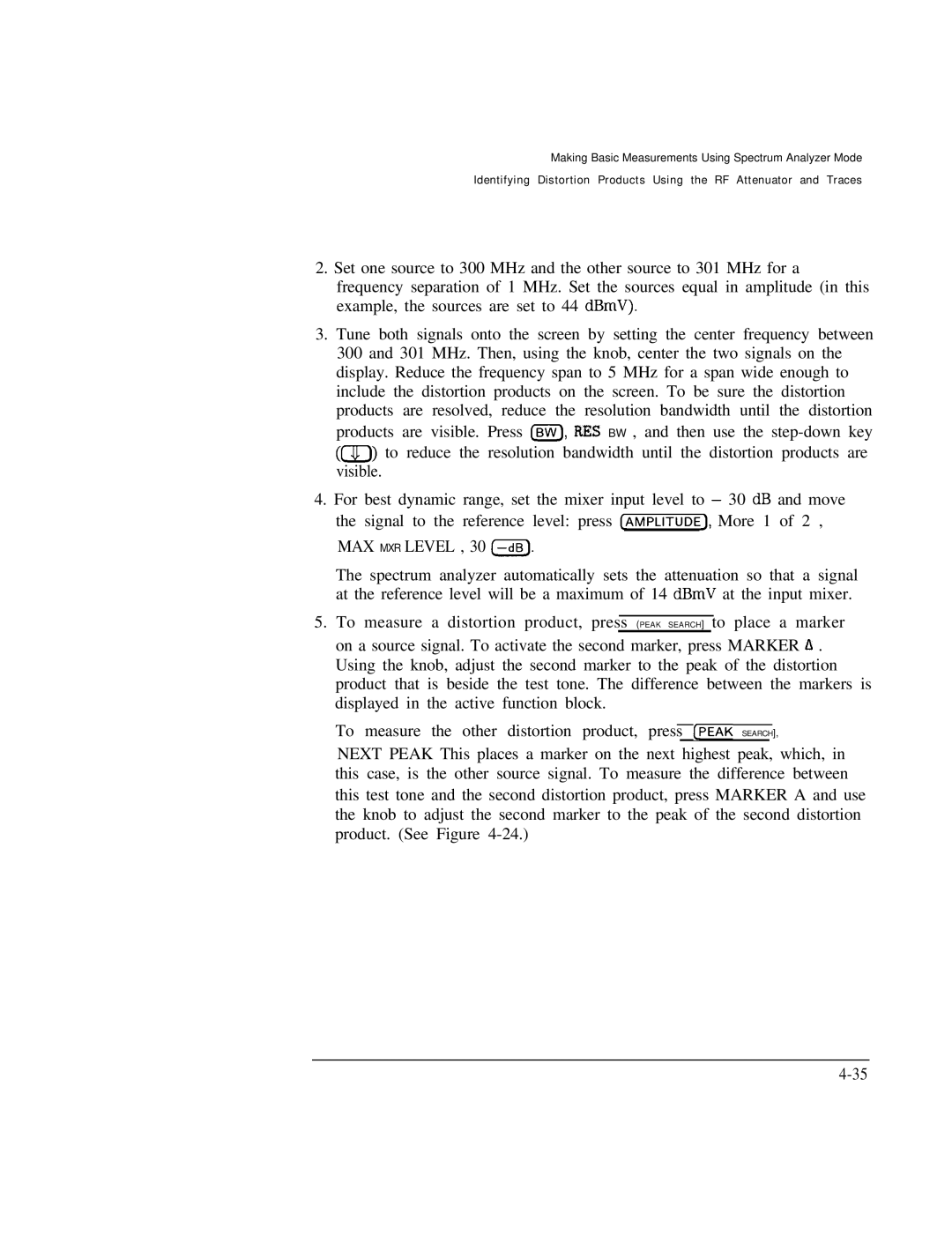
Making Basic Measurements Using Spectrum Analyzer Mode
Identifying Distortion Products Using the RF Attenuator and Traces
2.Set one source to 300 MHz and the other source to 301 MHz for a frequency separation of 1 MHz. Set the sources equal in amplitude (in this example, the sources are set to 44 dBmV).
3.Tune both signals onto the screen by setting the center frequency between 300 and 301 MHz. Then, using the knob, center the two signals on the display. Reduce the frequency span to 5 MHz for a span wide enough to include the distortion products on the screen. To be sure the distortion products are resolved, reduce the resolution bandwidth until the distortion products are visible. Press Isw), RES BW , and then use the
4.For best dynamic range, set the mixer input level to - 30 dB and move
the signal to the reference level: press CAMPLITUDE), More 1 of 2 , MAX MXR LEVEL , 30
The spectrum analyzer automatically sets the attenuation so that a signal at the reference level will be a maximum of 14 dBmV at the input mixer.
5.To measure a distortion product, press (PEAK SEARCH] to place a marker on a source signal. To activate the second marker, press MARKER A . Using the knob, adjust the second marker to the peak of the distortion product that is beside the test tone. The difference between the markers is displayed in the active function block.
To measure the other distortion product, press CPEAK SEARCH],
NEXT PEAK This places a marker on the next highest peak, which, in this case, is the other source signal. To measure the difference between this test tone and the second distortion product, press MARKER A and use the knob to adjust the second marker to the peak of the second distortion product. (See Figure
